Episodic or persistent low back pain often indicates the gradual development of inflammatory or degenerative-dystrophic disease in the body. Early diagnosis of this disease can increase the chances of a full recovery. Pain in the lumbosacral area of the spine may indicate osteochondrosis, hernia, protrusions, infection, or problems with internal organs.
Why does my lower back hurt?
If a person complains of painful manifestations of the lumbar spine, the doctor initially expresses suspicion about the patient’s musculoskeletal problems. And only after the exclusion of such diseases are a thorough examination carried out to assess the condition of the internal organs.

This is because there is general innervation of the lumbar vertebrae and intervertebral discs with the trunk of nerve tissue. For this reason, the appearance of pain in the digestive tract, for example, can only be given to the lumbar region. Let’s take a closer look at some of the causes of low back pain.
Excessive loads
It is a relatively natural source of back pain. With hard physical work or active sports training, muscle tissue is exposed to excessive stress. It accumulates lactic acid, which irritates skeletal muscle tissues. As a result, in addition to the pain, a person notices the appearance of a sufficiently strong burning sensation. Any discomfort disappears after a short break as lactic acid is excreted from the muscles.
If you have low back pain during each workout, if your intensity stays the same for a few hours, you should see a doctor. Excessive training, lifting heavy objects often provokes the appearance of microtraumas in the discs and vertebrae, the development of degenerative-dystrophic diseases.
Osteochondrosis and intervertebral hernia
I. , II. And III. Stage lumbar osteochondrosis is the main cause of back pain. In the early stages, the patient worries about minor discomfort, indicating mild destruction of the intervertebral discs.
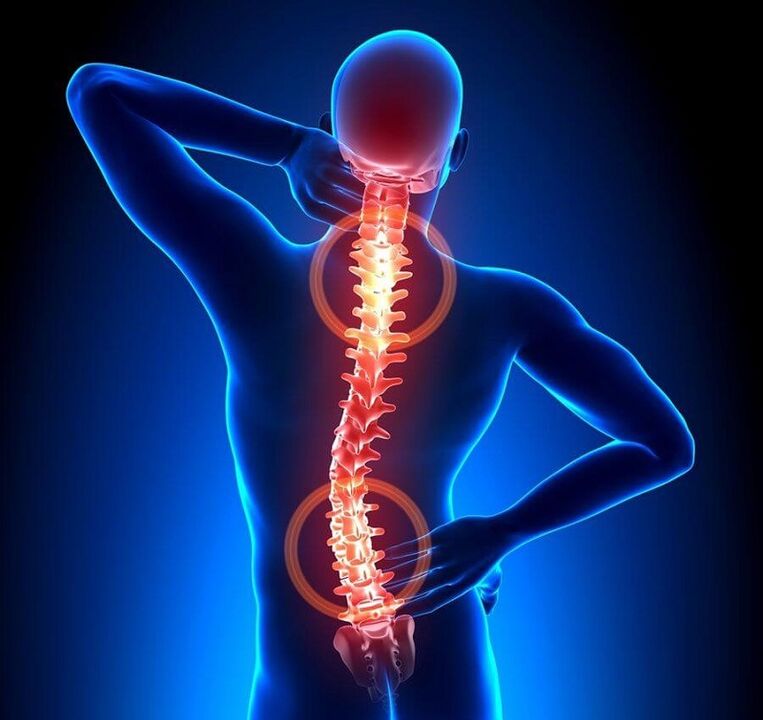
In the event that the patient has sought the assistance of a neurologist during this period, it is possible for the disease to recover completely and for the tissue to be partially restored. Sharp, severe pain, exacerbated by bending or twisting the torso, indicates severe damage to the structure of the spine.
In the background of radiological grade II or III osteochondrosis, the development of hernias or protrusions is often observed. This causes stabbing pain and can lead to serious complications such as radical syndrome and discogenic myelopathy.
Gynecological diseases
Lumbar spine discomfort often bothers women who have been diagnosed with adnexitis, an inflammation that affects the ovaries and fallopian tubes (uterine appendages) at the same time. In addition to pain syndrome, patients note the occurrence of genital discharge, the appearance of conception problems, and irregularities in the menstrual cycle.
Similar symptoms are observed with inflammation of the appendages of the uterus, the formation of cysts in the ovaries, and the formation of polyps in the uterus.
Kidney disease
Because the kidneys are located right next to the lumbar region, as their function decreases, a person may feel pain in the lower back. The fact that these bean-shaped paired organs are affected is indicated by a violation of urinary function, the appearance of purulent or bloody contaminants in the urine, and a general deterioration in well-being.
Lumbar spine pain is often a concern in the presence of such diseases as cystitis (including bleeding), glomerunonephritis, pyelonephritis, acute and chronic renal failure.
Baby carrying
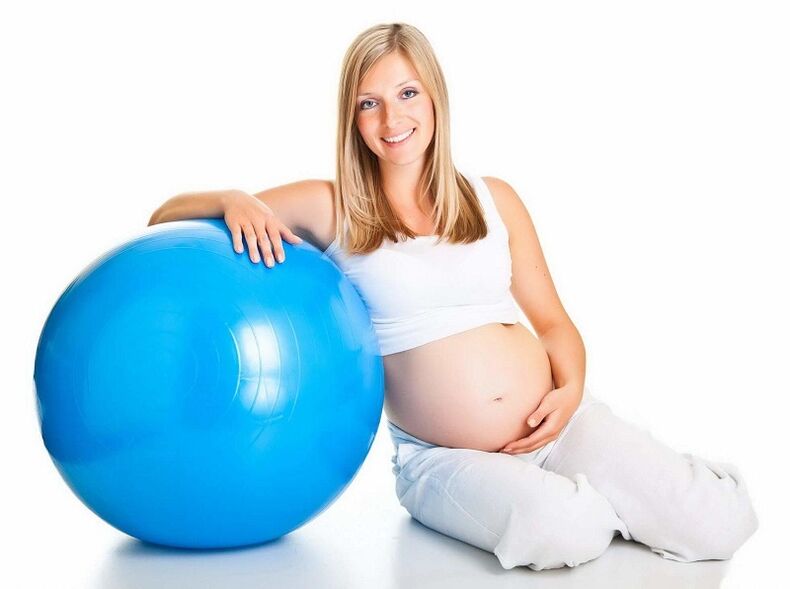
This is one of the natural factors that leads to unpleasant manifestations in the lumbar spine. When a woman wears a expectant baby, the uterus and fetus enlarge, causing damage to the nerve receptors below.
In the last trimester, the mother's body begins to produce a special hormone - relaxin. This leads to the relaxation of the ligaments, tendons, in order to facilitate the passage of the fetus through the birth canal. Because of this, the intensity of the pain can increase dramatically.
Endometriosis
It is a common gynecological disease in which the background of internal uterine tissue exceeds its limits. Endometrioid tissue is hypersensitive to hormones synthesized by the body, which is why endometriosis occurs as monthly bleeding. This causes inflammation, one sign of which is pain syndrome, which radiates to the lumbosacral region of the spine.
Menstruation
Moderate to severe painful manifestations occur in half of women before menstruation or during bleeding. This pain is quite natural and goes away immediately after your period. The discomfort can also be felt in the lower back.

The abnormal etiology of low back pain during menstruation is indicated by the presence of dyspeptic disorders, diarrhea or constipation, frequent headaches, and dizziness. In a similar situation, a woman can be diagnosed with algomenorrhea or menstrual disorder.
Breast sizes
In women with large breasts, the spine is heavily loaded. If the mammary glands are not properly distributed, there is an increased risk of developing degenerative-destructive processes. Women with large breasts often crouch, which contributes to spinal deterioration.
Uncomfortable shoes
Painful sensations in the lumbar spine that occur at the end of a work day are a common condition in women who wear tight high heels. This leads to damage to the blood vessels, disturbances in the blood circulation in the lower limbs and pelvic organs. As a result, the nutrition of the intervertebral discs in the lumbar region deteriorates, causing them to be destroyed. The situation is getting worse due to the increased load on the spine.
Age of change
During menopause, a woman's body's production of estrogens, which are involved in regulating the recovery processes of the musculoskeletal system, decreases. The bone structure loses its ability to fully assimilate the trace elements needed to restore it. It will be brittle, which can lead to frequent fractures. Painful manifestations in the lumbar spine during menopause may indicate bone resorption and osteoporosis.
Overweight
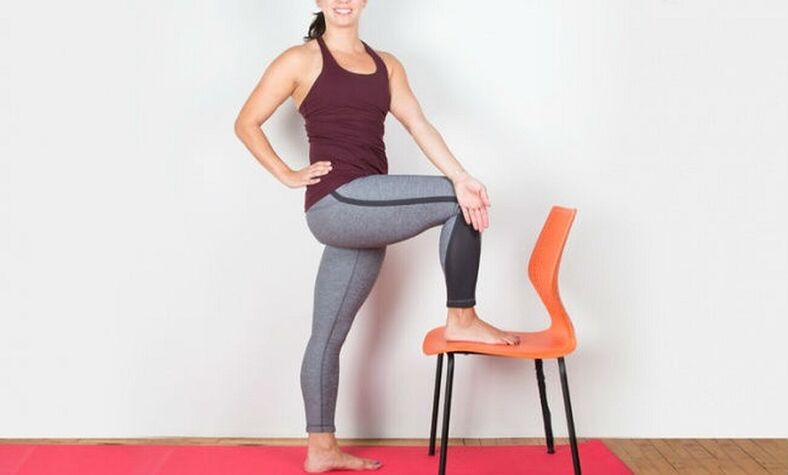
One of the causes of lumbosacral osteochondrosis is overweight. Being overweight increases the load on the intervertebral discs, leading to an increased risk of microtrauma associated with further destruction of vertebral tissues.
An overweight person usually does not eat well. Your diet is rich in high-calorie foods, and fresh vegetables and fruits that contain essential trace elements and vitamins are not consumed in sufficient quantities. In addition to increased loads and lack of useful substances, they tend to develop osteochondrosis of the lumbar region.
Oncology
Changes in the genetic structure of cells lead to a violation of the regulation of their growth and proliferation. As a result, pathological proliferation of the tissue occurs, a benign or malignant tumor is formed.
Lumbar spine pain can manifest itself in the background of cancerous damage to sensitive nerve receptors, the spine, the soft tissue, and the circulatory system. Calcium is absorbed in large amounts by the neoplasm, which results in a lack of this substance in the bone tissue, leading to thinning of the bones.
Hypothermia
The skeletal muscles of the lumbosacral region are often inflamed by low temperatures. This will be the cause of myositis - a disease that manifests as local pain syndrome in injured muscles. Its intensity increases significantly during movement and touch. In the background of the inflammatory process, an increase in muscle tone is observed, which makes the lower back less mobile.
Types of pain
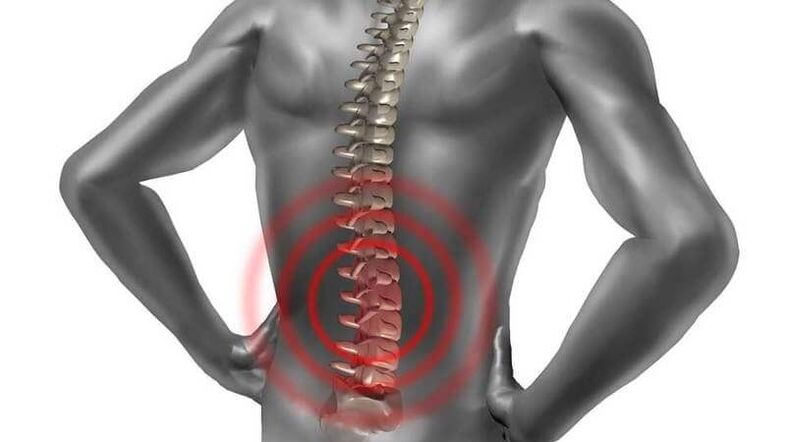
The initial diagnosis can be made based on a detailed description of the disturbing symptoms. In each disease, the pain manifests itself in different severity, frequency, and condition, preventing its occurrence.
Intense pain
This is a pain syndrome of lumbar osteochondrosis II. And III. It is characteristic of its stage. At this stage, there was significant destruction in the intervertebral discs, which lost their impairment characteristics. They are unable to soften the load during movement, making the structure of the vertebrae unstable.
This leads to compression of soft tissues. Severe pain begins to interfere even when motionless, increasing against the background of bends and twists, loud laughter, coughing, and sneezing. In addition, the weakness of the "goose hills" and muscles can be felt.
Sharp pain
The onset of acute pain syndrome is caused by receptors in the spinal cord being compressed by osteophytes or plates. This is characteristic of the lumbago attack, which often manifests itself in rheumatic diseases, lumbosacral osteochondrosis, radiculopathies.
The painful feelings are so pronounced, stinging, burning that the patient is unable to move. It is often the case that a person cannot straighten their back because they are afraid of pain.
Dull pain
Dull, aching, and squeezing pain in the lumbar spine is characteristic of diseases of the internal systems, including the urogenital and reproductive organs. Such discomfort may indicate the development of osteochondrosis, spondyloarthrosis, spondyloarthritis.
The pain is not localized, but can radiate to the hips, buttocks, and ankles. Often, painful pain is evidence of a destructive process in the spine or inflammation of the internal system.
Chronic pain

Permanent pain in the lower back indicates that the disease is becoming chronic. Sharp, strong during relapse, radiates to nearby areas of the body. During the remission period, mild discomfort occurs during hypothermia, exercise, exacerbation of other diseases, acute respiratory viral infections.
Pain syndrome increases in the background of bending, torso rotation, walking on stairs, and prolonged walking.
Diagnostic measures
The disease is diagnosed on the basis of patient complaints, visual examination, anamnestic data, results of instrumental and laboratory diagnostics. X-ray examination is the most informative in identifying musculoskeletal problems. The resulting image shows the altered vertebrae, formed osteophytes (bone formations).
If the doctor suspects the formation of a hernia, protrusion, diseases of the internal systems, ultrasound, MRI and CT are prescribed. Thanks to these diagnostic methods, it is possible to find out the localization of the disease and to assess the extent of the progression of inflammation.
Clinical examination of blood and urine is mandatory. If a suspected systemic disease (gout, rheumatoid arthritis) is suspected, a biochemical, serological test is performed.
Which doctor to go to
Often back pain occurs after injury - vertebral subluxation, severe bruises, spinal canal lesions. In this situation, you will need the help of a traumatologist.
You can also see a therapist. Such a doctor can diagnose diseases of the spine, internal systems. After examining the results of the diagnosis, you will determine which narrow specialist consultation (rheumatologist, neuropathologist, or orthopedist) is required to prescribe further treatment.
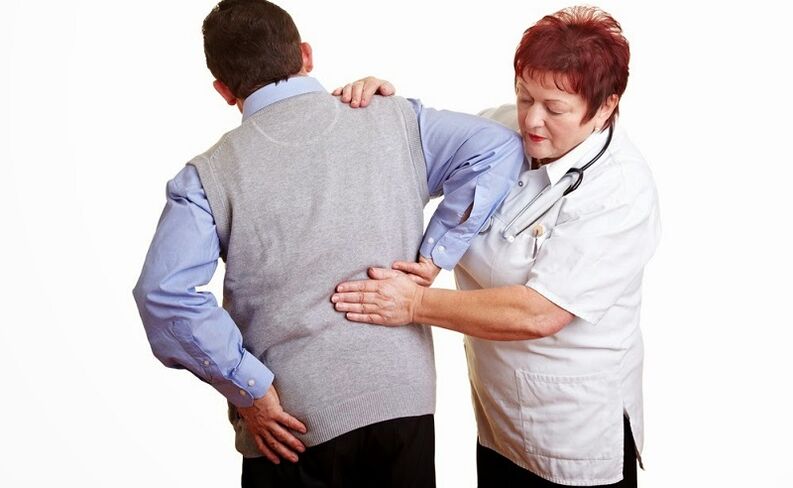
First aid
In the case of severe acute pain, the victim should be placed on a hard surface in a position where the discomfort is less pronounced. You can lie with your knees slightly bent and under a blanket. You can take any non-steroidal anti-inflammatory drug for quick pain relief.
Therapeutic operations
Painkillers can help get rid of back pain. Their effects do not last long if the underlying disease is not treated properly. Some pathologies of the internal systems are well manageable, including oncology. But in the background of osteochondrosis, complete recovery of destroyed intervertebral discs and deformed vertebrae is impossible. The goal of therapy is to achieve stable remission in which lumbar spine pain does not interfere.
Drug therapy
First, in the case of back pain, the administration of non-steroidal anti-inflammatory drugs (NSAIDs) is prescribed in the form of tablets or capsules.
In the case of oncological diseases, narcotic analgesics are used. If the pain is due to skeletal muscle spasms, muscle relaxants are indicated.
Painkillers are also prescribed to treat diseases of the internal systems.
Treatment with ointments and gels
Ointments and gels are used to relieve mild to moderate discomfort in the lumbar region. Medicines for external use are also included in the therapeutic regimen to reduce the dose of injections and tablet medications to reduce the pharmacological load on the body.
In case of back pain, the use of external agents from the following groups may be prescribed:
- NSAIDs - have anti-inflammatory, analgesic and decongestant effects.
- Warming gels and ointments - have analgesic, local irritant and irritating effects.
- Chondroprotectors in the background of osteochondrosis - have an analgesic and anti-inflammatory effect, stimulate plate recovery.
Injections
When choosing painkillers, the doctor depends on the type of disease, its course, and the severity of the pain syndrome. Drug blockers are often used with glucocorticosteroids and anesthetics to eliminate acute pain. The use of hormonal agents is quite harmful to the body, so such procedures can be performed up to 1 time in 1-3 months.
To eliminate severe pain, NSAIDs are prescribed as an injection into a muscle.
Physiotherapy
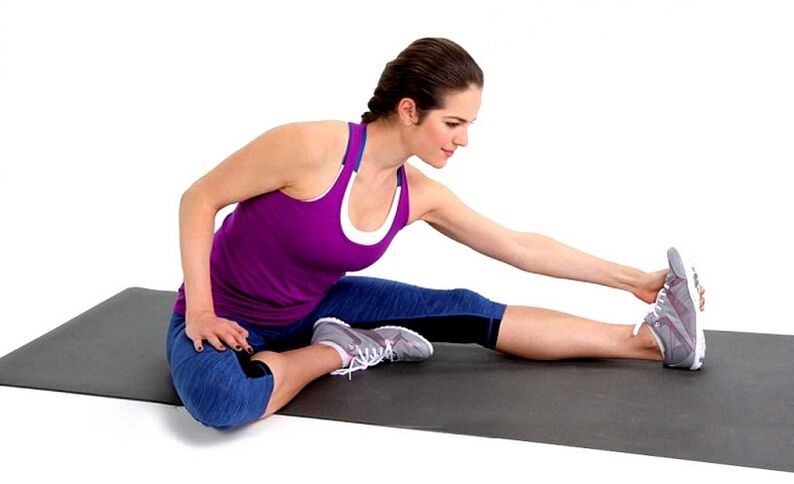
If a disease has already been diagnosed or to prevent it, experts advise patients to perform therapeutic gymnastic exercises every day. It helps:
- improves blood circulation in the lumbar region;
- strengthen the muscular frame of the back;
- reduce the intensity of pain.
The gymnastics complex is developed by the attending physician based on the type of disease, the complications present, and the patient’s physical condition.
Massage treatment
Massage is recommended to improve the blood and nutrient supply of the tissues, to normalize the tone of the skeleton and smooth muscles, and to strengthen the muscles:
- classic;
- point;
- segmental;
- preserved.
Massage is prescribed for both therapeutic purposes and to prevent the development of exacerbations during the chronic course of the pathology.
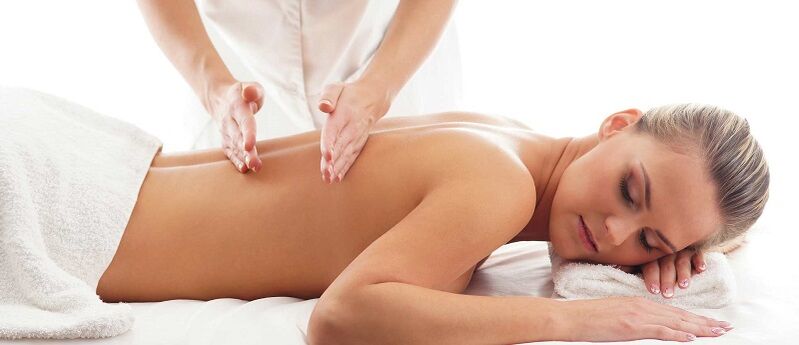
Heat and cold treatment
The heat effect of the lumbar spine helps to relieve pain, but only after stopping the acute inflammatory process. For this purpose, a heating pad, warming ointment or gel, bath is suitable.
Under the influence of cryotherapy (cold treatment), adaptation systems are activated. At the heart of this physiotherapy procedure, the body’s response is not hypothermia to the outer layers of the skin.
Preventive measures
It is possible to prevent the occurrence of pain in the lumbar spine by excluding factors that may trigger the onset of the problem. To minimize the consumption of very high calorie foods, you should stop walking in high heels. Regular sports, swimming and yoga are good prophylaxis.














































